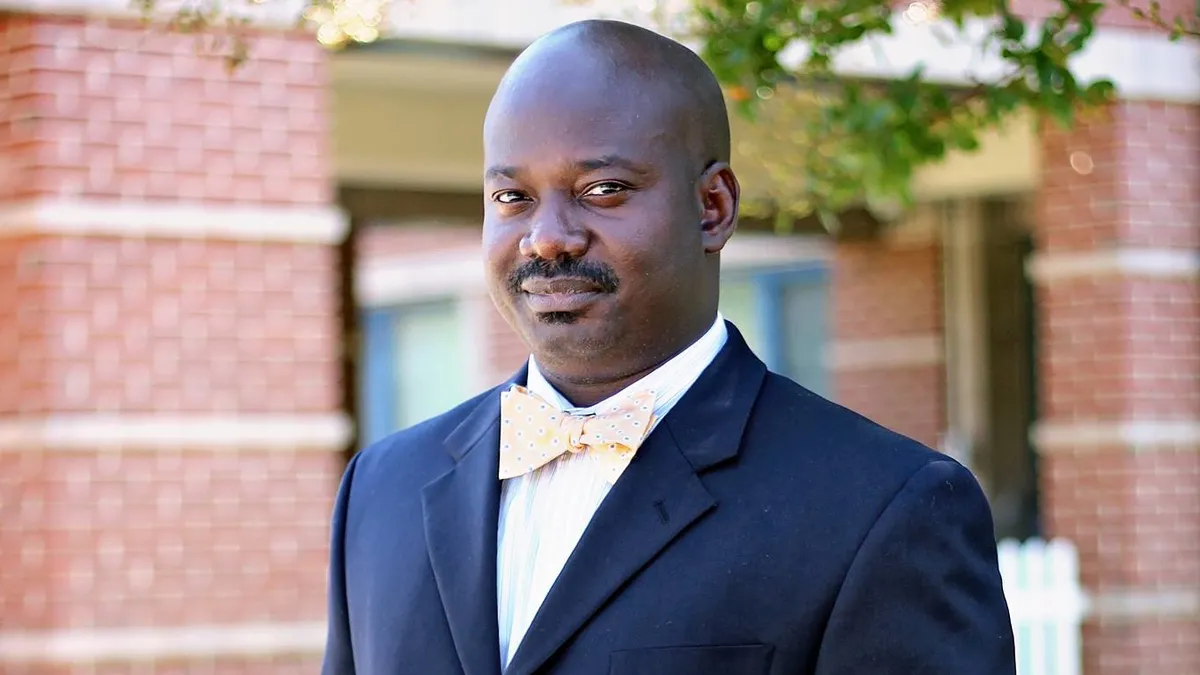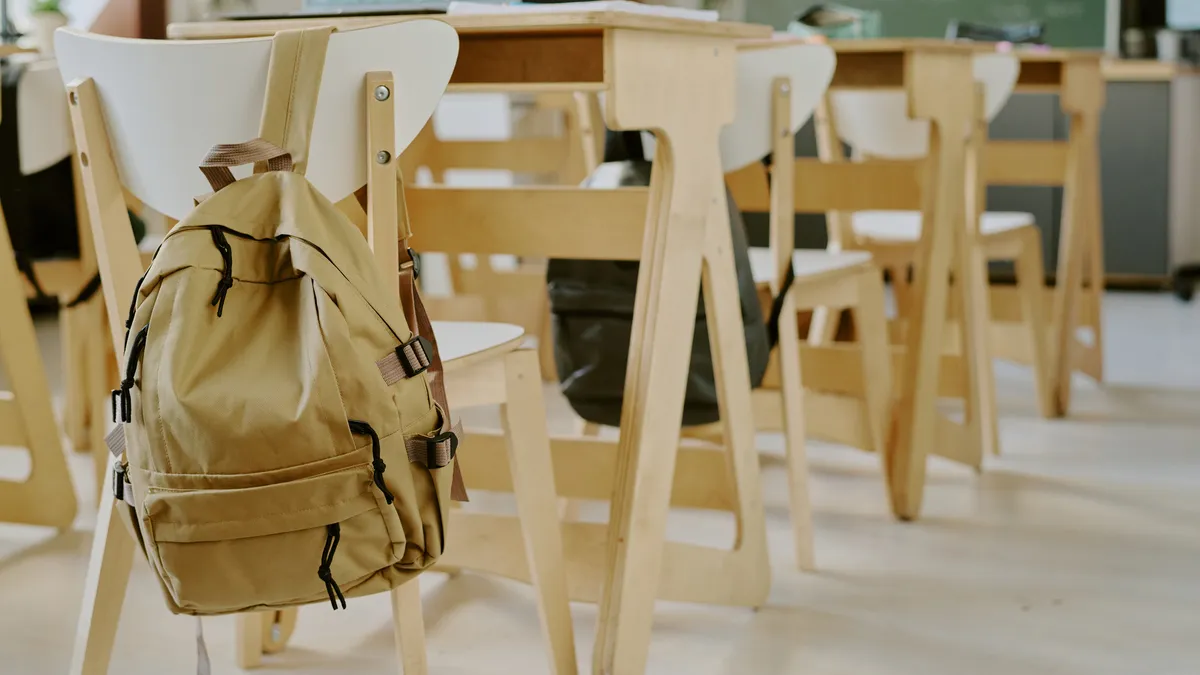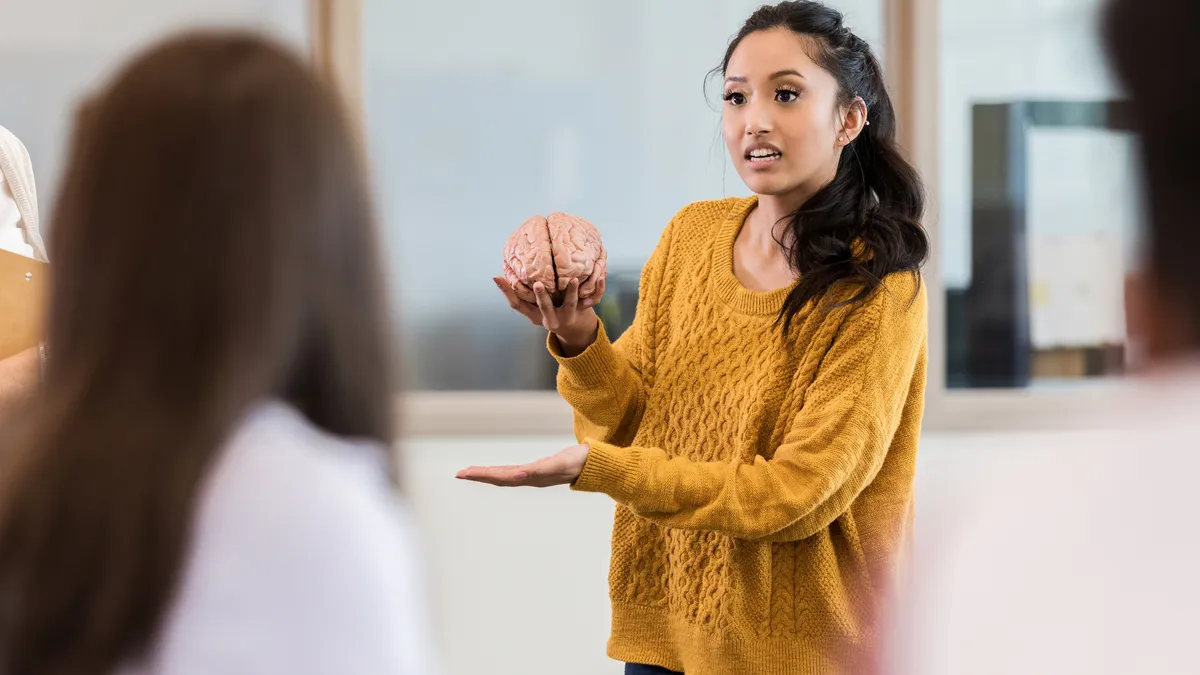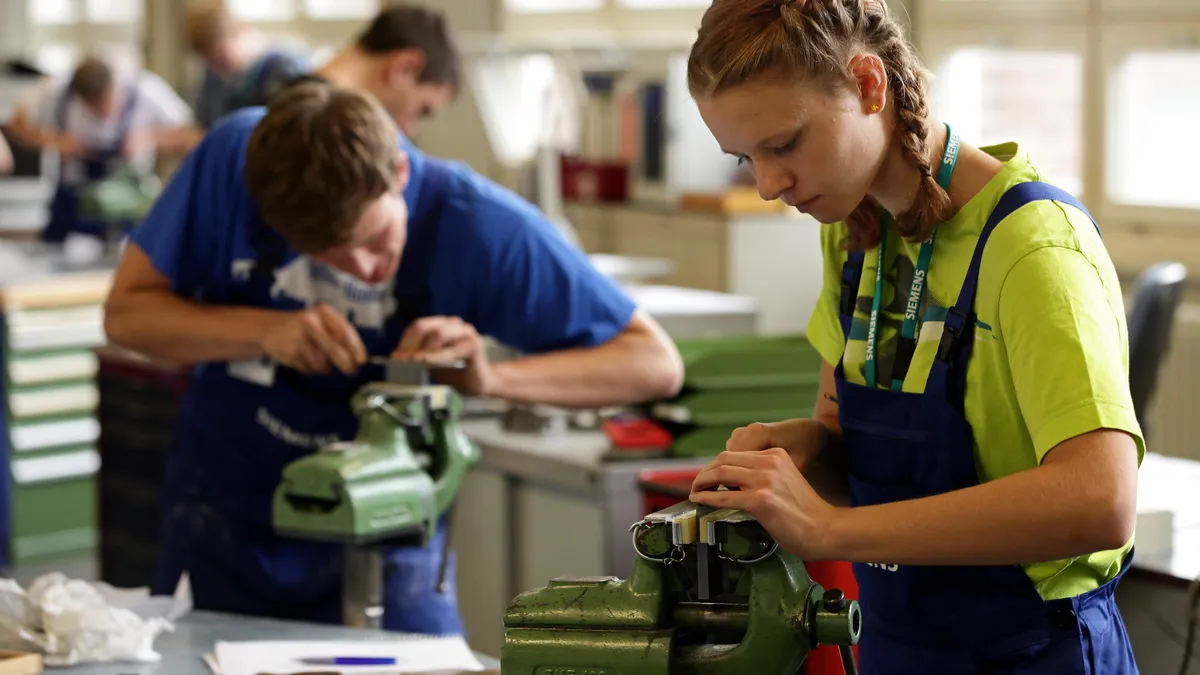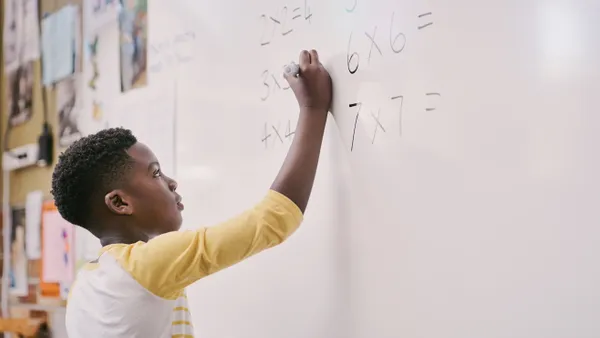Derek McCoy, the director of learning and innovation for Georgia's Grady County Schools, wants to see an educational revolution — but what does that mean, exactly?
To the former middle school principal and co-author of "The Revolution: It's Time to Empower Change in Our Schools," it means shifting culture, retraining educators to evaluate learning differently, and reconsidering how we approach middle-schoolers.
" They just have more questions," McCoy told Education Dive. "And really the best part of learning is not having answers for questions, but having questions for questions and putting that back on learners with real motivation to explore themselves."
We recently caught up with McCoy to learn more about his approach to shifting culture and the steps educators can take to begin reimagining what middle school can be.
EDITOR'S NOTE: The following interview has been edited for brevity and clarity.
EDUCATION DIVE: Your previous district, North Carolina's Rowan-Salisbury Schools, is known for its innovation and tech integration. What did you learn from your experiences there that you've been able to bring to Grady Schools?
DEREK MCCOY: It starts with culture, and it starts with training. The first part is coming in and painting a picture that is just having good talks with everybody about where we are and where we can go, and showing them how things can be and are being done elsewhere.
When I started [as principal] at Washington Middle School [in Rowan-Salisbury], that was an emphasis of mine — to say, “Here's how we have done things traditionally. But here's other middle schools and what they've done.”
Shifting the culture means looking at some of the practices and having lots of conversations about why things can be different and should be different for learners. And that's the tough piece — having conversations and understanding that giving up practices, as hard as it is, benefits learners. We all come to school every day to do our best, but changing practices and mindsets is just hard. Changing your school culture to support that is just critical and important.
Training is the second piece. We set up a very robust teacher training system in our school where our theme for the year was shifting to whole-group instruction.
We did that through modeling, and we did that through talks and walkthroughs and observations. And then, more importantly, getting the admin team to embrace their role as coaches, and understanding instead of the old management mindset, the transformative mindset supports embracing a growth mindset versus a fixed mindset.
One of the things education as a whole has lost is that, in our effort to build strong schools, we have lost what learning is about. We've lost the growth and the struggle piece of learning — to try something and try it again. That takes time. Nothing happens overnight.
When people talk about their K-12 experiences, they always say middle school was the roughest years. And a lot of people say it's the toughest age range to have to teach because students are struggling to find their identities. What do you keep in mind when designing curriculum to help guide middle-schoolers in finding their identities along with learning?
MCCOY: When I first started, I was like most of us educators and, more importantly, most adults in their perception of middle school. I attended the AMLE (Association for Middle Level Education) conference in Texas, and as I was getting on the plane, struck up a conversation with somebody. I said I work in a middle school, and then she cranes, like, “Oh, there's no way I could do that. It's a horrible age group.”
I've heard that a hundred times. I did my typical response: laugh it off and say, “Now, it's not that bad.”
But upon reflection later on, I thought, "Why am I doing that? Why are we saying that?” We do that because society as a whole looks at 11-to-13-year-olds as, like, hormonal monsters. But more importantly, we have vilified the fact they are changing from an adult-pleasing mindset to one of “Hey, what's going on?”
I'm not even saying they're more independent. It's just, “I'm becoming more aware. I can do things.” Our 11-to-13-year-olds are transitioning to “Hey, I like doing this, too. I think I have a passion for this.”
So we're aware we're putting all this negative stigma and negative weight to this age group when we should really be embracing the fact they're coming into their own and don't need more structure and more guidelines and more rigidity. They need guidance. They need coaching.
When you ask what can we do to help with that, we can start offering learners choice. Choice is, if it makes a world of difference to somebody who is developing or starting to ask questions like, "Do I like video?” We'll make a video. We can offer choice in that.
Another way for you to demonstrate your learning is for you to start a podcast or write a blog or interview someone or make something. When we offered choice and we offer learners ways to demonstrate their learning or to research or access information, we're helping them say, “This is the kind of learner I am. This is the kind of person I want to be.”
We're helping them connect to a bigger world than just one way a person told them they have to demonstrate learning or access information.
With everything going on with students during those transitional years, how do you also keep them engaged with what's going on in class?
MCCOY: You have to change the culture of your school. You have to make it happen, make a lot of cultural shifts. One of the shifts my co-author Darren Ellwein and I talk about is building up a culture of empowerment.
It has to be in your mission to school leaders, has to be in your mission to empower teachers, to not just allow them to make change, but to encourage them to take risks and do some things in their class that focus on learning in different ways. That culture of empowerment isn't just leaders to teachers, it’s teachers to the learners in their classrooms. We're encouraging learners to take risks. We're encouraging learners to collaborate with each other, to really connect with the world around them.
When we do this, this is really learner-centered work. You have to do more coaching with students.
The end product is going to look different than a 20-question, multiple-choice test, you know? A lot of things have to be changed and look different. Embracing choice is a lot of work because not everybody is doing the same thing, and we shouldn’t [do the same thing].
When you build up those high cultural expectations, you'll see amazing transformative things. The first year I was [at West Rowan Middle], we revamped the classrooms and made them collaborative spaces, and teachers allowed students in and out of there. We had all kind of questions, you know: “Kids are going to get into this kind of stuff. Kids are going to have this kind of negative thing.”
We didn't have a bit of it, and that was all because teachers built up expectations first. When we changed that larger piece, the level of work and engagement changed significantly. When kids have to create projects and collaborate with each other, you're going to see a high level of engagement. You're going to go from engaged right to empowered.
Given the amount of self-doubt students in that age range can feel, especially as they progress toward high school, what are some things educators creating curriculum for middle-schoolers should keep in mind to help them build confidence to tackle more rigorous or ambitious things?
MCCOY: One of the things we did was to embrace [the idea of] learners presenting their knowledge. Not just making it about a test — even though you're always going to have a test you've got to take or a quiz — but giving opportunities for learners to make presentations and demonstrate their learning.
We had compassion projects where students had to work together to change a life, change a community or change the world. They did it collaboratively or independently, and everybody had to present what they did. The technology at West Rowan allowed students to connect directly from their iPads to Apple TV from their seats. Most chose to get up [in front of the class] and talk their way through it.
That not only shows what was done, but [that] communication is a real adult skill needed in the work space.
When you're contemplating what is learning...what's [also] going to come up is how students access information.
That's not just a textbook — it could be blogs, it could be all on your computer, it could be face-to-face interviews. The cycle of learning, including revisions, has brought us into design thinking and real collaboration. The days of work in cubicles are over; we're working at tables now and we're generating high-level discussions.
You’ve been around education long enough to know when we talk about designing curriculum, we look at it as a very linear process. So we're adding fractions Monday, Tuesday and Wednesday. Then we're testing on Thursday, and then we go to subtracting fractions. That's it. It's very linear. Nothing about learning or about the brain says, 'Give these [number of] days and this is going to happen.'
We have to make things real, so when they see it in context, not only will it have meaning for them and their future, but it will really drive home what the teacher needs to happen in that classroom.
We have opportunities where we can connect through video with other classes around the world. One of my favorite stories about this came from Darren’s school where 8th-grade girls were connecting with some similar age girls in Africa. [They talked about] just looking to go to school for two or three hours a day, you know, and just some of the things we take for granted. It’s just a real cultural exchange.
We think this should happen at the middle school level. We should be creating these types of experiences so we are getting out of this mindset of developing a school where we are containing and have high control over learners versus building the kinds of citizens we want in the world. I would much rather know our middle schools are going through a generation of learning where we're focusing on global empathy.



